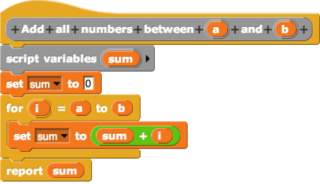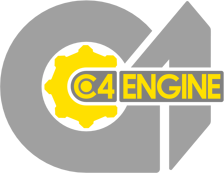Related Research Articles
In digital printing, a page description language (PDL) is a computer language that describes the appearance of a printed page in a higher level than an actual output bitmap. An overlapping term is printer control language, which includes Hewlett-Packard's Printer Command Language (PCL). PostScript is one of the most noted page description languages. The markup language adaptation of the PDL is the page description markup language.

Typesetting is the composition of text for publication, display, or distribution by means of arranging physical type in mechanical systems or glyphs in digital systems representing characters. Stored types are retrieved and ordered according to a language's orthography for visual display. Typesetting requires one or more fonts. One significant effect of typesetting was that authorship of works could be spotted more easily, making it difficult for copiers who have not gained permission.
A game engine is a software framework primarily designed for the development of video games and generally includes relevant libraries and support programs such as a level editor. The "engine" terminology is akin to the term "software engine" used more widely in the software industry.
X3D is a set of royalty-free ISO/IEC standards for declaratively representing 3D computer graphics. X3D includes multiple graphics file formats, programming-language API definitions, and run-time specifications for both delivery and integration of interactive network-capable 3D data. X3D version 4.0 has been approved by Web3D Consortium, and is under final review by ISO/IEC as a revised International Standard (IS).
A game programmer is a software engineer, programmer, or computer scientist who primarily develops codebases for video games or related software, such as game development tools. Game programming has many specialized disciplines, all of which fall under the umbrella term of "game programmer". A game programmer should not be confused with a game designer, who works on game design.

Max, also known as Max/MSP/Jitter, is a visual programming language for music and multimedia developed and maintained by San Francisco-based software company Cycling '74. Over its more than thirty-year history, it has been used by composers, performers, software designers, researchers, and artists to create recordings, performances, and installations.

In computing, a visual programming language, also known as diagrammatic programming, graphical programming or block coding, is a programming language that lets users create programs by manipulating program elements graphically rather than by specifying them textually. A VPL allows programming with visual expressions, spatial arrangements of text and graphic symbols, used either as elements of syntax or secondary notation. For example, many VPLs are based on the idea of "boxes and arrows", where boxes or other screen objects are treated as entities, connected by arrows, lines or arcs which represent relations. VPLs are generally the basis of Low-code development platforms.
A domain-specific language (DSL) is a computer language specialized to a particular application domain. This is in contrast to a general-purpose language (GPL), which is broadly applicable across domains. There are a wide variety of DSLs, ranging from widely used languages for common domains, such as HTML for web pages, down to languages used by only one or a few pieces of software, such as MUSH soft code. DSLs can be further subdivided by the kind of language, and include domain-specific markup languages, domain-specific modeling languages, and domain-specific programming languages. Special-purpose computer languages have always existed in the computer age, but the term "domain-specific language" has become more popular due to the rise of domain-specific modeling. Simpler DSLs, particularly ones used by a single application, are sometimes informally called mini-languages.
Game programming, a subset of game development, is the software development of video games. Game programming requires substantial skill in software engineering and computer programming in a given language, as well as specialization in one or more of the following areas: simulation, computer graphics, artificial intelligence, physics, audio programming, and input. For multiplayer games, knowledge of network programming is required. In some genres, e.g. fighting games, advanced network programming is often demanded, as the netcode and its properties are considered by players and critics to be some of the most important metrics of the game's quality. For massively multiplayer online games (MMOGs), even further knowledge of database programming and advanced networking programming are required. Though often engaged in by professional game programmers, there is a thriving scene of independent developers who lack a relationship with a publishing company.
Pygame is a cross-platform set of Python modules designed for writing video games. It includes computer graphics and sound libraries designed to be used with the Python programming language.
A user interface markup language is a markup language that renders and describes graphical user interfaces and controls. Many of these markup languages are dialects of XML and are dependent upon a pre-existing scripting language engine, usually a JavaScript engine, for rendering of controls and extra scriptability.

The Blender Game Engine was a free and open-source 3D production suite used for making real-time interactive content. It was previously embedded within Blender, but support for it was dropped in 2019, with the release of Blender 2.8. The game engine was written from scratch in C++ as a mostly independent component, and includes support for features such as Python scripting and OpenAL 3D sound.
An image file format is a file format for a digital image. There are many formats that can be used, such as JPEG, PNG, and GIF. Most formats up until 2022 were for storing 2D images, not 3D ones. The data stored in an image file format may be compressed or uncompressed. If the data is compressed, it may be done so using lossy compression or lossless compression. For graphic design applications, vector formats are often used. Some image file formats support transparency.

The C4 Engine is a proprietary computer game engine developed by Terathon Software that is used to create 3D games and other types of interactive virtual simulations for PlayStation 5, PlayStation 4, PlayStation 3, Windows, Mac OS X, Linux, and iOS.
Game Description Language (GDL) is a specialized logic programming language designed by Michael Genesereth. The goal of GDL is to allow the development of AI agents capable of general game playing. It is part of the General Game Playing Project at Stanford University.
General game playing (GGP) is the design of artificial intelligence programs to be able to play more than one game successfully. For many games like chess, computers are programmed to play these games using a specially designed algorithm, which cannot be transferred to another context. For instance, a chess-playing computer program cannot play checkers. General game playing is considered as a necessary milestone on the way to artificial general intelligence.
References
- ↑ EGGG : The extensible graphical game generator by Jon Orwant, a Ph.D. Thesis
- ↑ "Video Game Language (ViGL) Archived January 6, 2006, at the Wayback Machine " begins to abstract away all the reusable technical and game related aspects that most games utilize into a domain specific language.
- ↑ http://www.pygame.org/project-A+video+game+description+language+(VGDL)-2397-4058.html A language for developing 2D video games using the pygame engine
- ↑ "Archived copy". Archived from the original on 2011-07-08. Retrieved 2010-06-28.
{{cite web}}: CS1 maint: archived copy as title (link) - ↑ Game Description Language Specification Archived July 20, 2011, at the Wayback Machine (PDF)
- ↑ Game Description Language for Incomplete Information. Extension to GDL which includes randomness and visibility (PDF)
- ↑ World Description Language (PDF). No longer available. Extension to GDL which includes realtime, randomness and visibility
- ↑ GameXML Archived May 21, 2011, at the Wayback Machine is a collection of XML specifications which describe and script computer simulation engines. Developed by the XML Game Consortium (XGC), it is an ongoing project to create a reusable, standards-based architecture that can be applied toward computer games and simulations.
- ↑ Xconq Xconq is a general strategy game system. It is a complete system that includes all the components: a portable engine, graphical interfaces for Unix/Linux/X11, Macintosh, and Windows, multiple AIs, networking for multi-player games, and an extensive game library.
- ↑ The Card Game Language Archived 2016-03-04 at the Wayback Machine The Card Game Language, or CGL for short, is a language which was developed during created by students in a project dedicated to the subject of language and compiler theory.
- ↑ The Card Game Description Language
- ↑ Modelling and Generating Strategy Games Mechanics by Tobias Mahlmann, a Ph.D. Thesis
- ↑ Gamut, a game generating command line program